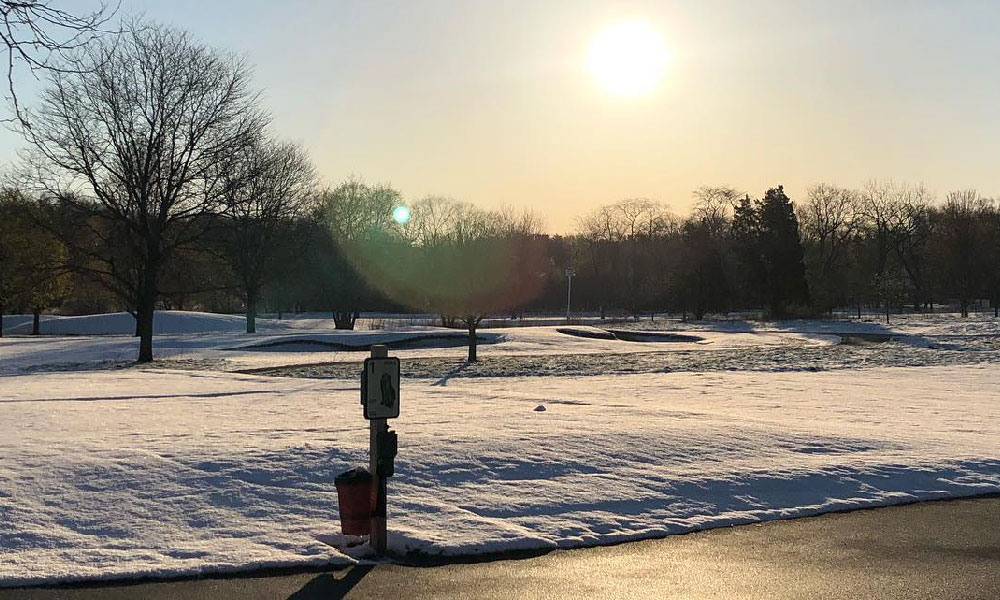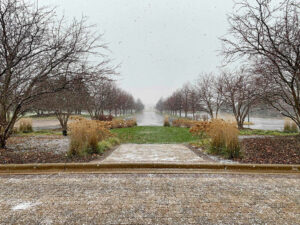If your golf course is located in a cold-weather climate, you know that the winter months can bring major changes. The goals shift from serving up a great round of golf to things like attracting guests to programming in the clubhouse or winter sports, as well as protecting the greens and equipment during the offseason.
The teams at KemperSports-managed golf course properties that thrive during the winter weighed in on this question, sharing some of their most successful strategies for conquering the cold weather. From winterizing and storing course equipment to hosting community programming that gets the whole family involved, here’s a look at some of their best-performing ideas:
- Adhering to critical practices to survive a long winter. For Golf Course Superintendent Steve Archibald at Thornberry Creek Golf Course in Green Bay, Wisconsin, a perfect winter would “start by having a nice blanket of snow by early December to help insulate the turf from the arctic cold, followed by freezing temperatures that would last until spring. Once spring arrives, all the snow would melt in a week.” Unfortunately for Steve, he’s never seen a perfect winter so he has to adhere to many critical practices to help reduce the potential damage that could come from severe winter weather in Wisconsin. Steve and his team begin preparing in late fall through the aerification of fairways, tees, and greens, which enables adequate drainage of any excess moisture that may occur during late fall rains and throughout the winter months. “It’s not uncommon, especially in the early winter months, to have snowfall followed by a rain event,” Steve said. “By aerifying, we help provide a space for the moisture to go instead of sitting on the surface, increasing the pressure of snow molds.”
The grounds crew at Thornberry Creek also suggests ensuring that all drain basins are open and free of debris to provide good drainage of all water for when the grounds thaw out. “If water is not allowed to drain, ice can begin to form, which will kill the turf if it’s undercover for extended periods of time,” he said. From here, the team applies fungicides to the bentgrass tees, greens and fairways to prevent snow molds. The biggest key to success, however, is constantly monitoring conditions throughout the season. “If icing events occur, we’ll go out and blow the snow off the greens down to the ice and apply milorganite, a fine, black, granular fertilizer that absorbs the sunlight and melts down the ice, creating airways,” Steve said. “We’re able to minimize our damage by staying on top of the situation throughout the entirety of the season.”
- Capitalizing on the opportunities the offseason brings. For years, the universal impression of the offseason was that there were no opportunities to keep guests involved because the course was closed. However, in the mind of Vince Juarez, PGA Master Professional and general manager at Deerpath Golf Course in Lake Forest, Illinois, that thinking is a fatal mistake. “Clubs can build for a successful golf season, all while putting programs into place to prepare and continue to drive revenue throughout the winter,” Vince said. Deerpath Golf Course takes full advantage of the Chicago area’s snowy climate by offering cross-country skiing and snowshoeing along with indoor programmings like cooking classes, wine tastings, and holiday gift wrapping. “Winter activities that appeal to all people not only help bring in business but also build support and rapport with guests, setting the table for a successful golf season when the spring finally arrives,” Vince said.
- Tapping technology. Keeping up with and satisfying the needs of incoming generations, such as Millennials and Gen Zs, can be a major key to a golf club’s success – both on- and offseason. That’s why the team at Heron Glen Golf Course, located in Ringoes, New Jersey, jumped when they had the chance to purchase an indoor golf simulator. “New Jersey is typically snow-covered in January and February, so the golf simulator is a great way to keep guests engaged,” said Tim Ward, the course’s general manager. Heron Glen’s PGA golf professionals turn their club fitting launch monitors into a winter golf simulator experience that includes playing virtual courses, practicing on the range and taking golf lessons. While the simulator software and equipment can be expensive, the return on investment is worth the while. “In the past, Heron Glen has created a winter indoor golf simulator league running for two months and offering fun formats while the course was closed, resulting in large revenue gain that couldn’t have been achieved without new technology,” Tim said.
- Producing club programming that gets everyone involved. From a Thanksgiving feast to brunch with Santa, The Glen Club in Glenview, Illinois, has winter clubhouse programming down to a tee. “Our entire course staff comes together each year and decides what events we want to host, especially during the winter season, that will make everyone from a young child to a senior not only want to be at the club but be happy to be there,” said Christie Paich, general manager of The Glen Club. And that line up can include anything from a Super Bowl party to Valentine’s Day dinner with a prix fixe menu to an all-you-can-eat Friday night Fish Fries from February to April.
“Getting people involved, both members and non-members alike, on the big, happy days of the year is something the crew at The Glen Club loves,” Christie said. “We host around 450 people each year for our Easter and Thanksgiving events, making us proud and excited to bring people together.” On top of driving revenue through event-based programs, The Glen Club ensures people aren’t losing their good golf games throughout the offseason by hosting an indoor golf league twice per week in January and February, setting up the indoor hitting bay they dubbed “The Golf Shop.” “At the end of the day, people want to go to a clubhouse and feel good, loved and valued, and we recognize that and do everything we can to deliver,” Christie said.
Winter doesn’t have to be gloom and doom for golf properties – and it can even be a driving force in setting the stage for the warm weather months. When it comes to engaging members and guests during the offseason, the right creative thinking can go a long way. And, as evidenced by these examples, can be major successes in creating long-term member and guest relationships within a community.






















